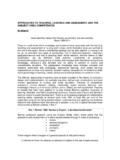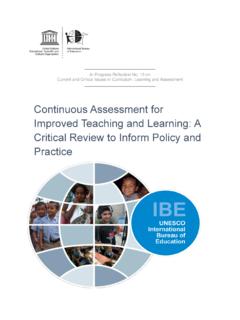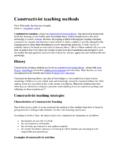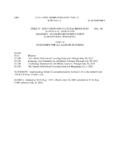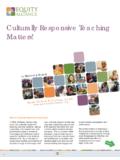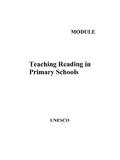Transcription of APPROACHES TO TEACHING, LEARNING AND ASSESSMENT …
1 APPROACHES TO teaching , LEARNING AND ASSESSMENT IN COMPETENCE BASED DEGREE PROGRAMMES 0. Background As part of the second phase of the Tuning project, the subject groups reflected on good practices in teaching , LEARNING and ASSESSMENT , in particular how teaching , LEARNING activities and ASSESSMENT can be best organised in order to allow students to reach the intended LEARNING outcomes of a course of study. Biggs (2002) describes this as the alignment of teaching , LEARNING activities, and ASSESSMENT with the intended LEARNING outcomes of a course of study. The subject groups discussed the various APPROACHES which are used or could be used in different subject areas, and provided a structured pan-European disciplinary-based context where an exchange of knowledge about APPROACHES currently used or potential, could take place and where new understanding could be achieved.
2 1. Introduction One of the key issues in higher education towards the end of the 20th century was the debate about the respective virtues and requirements of traditional academic education and vocational education. Much of the debate took place within universities, particularly in the new context of the knowledge society. Many professions once wholly practiced by persons not holding a university degree saw increased demands for university training. One consequence was the introduction of more professional courses into the university system in some countries, and a greater emphasis on the utility value of university courses in those countries with a binary system. In many EU countries university academics have had to reconcile educational dimensions and professional requirements and manage the tensions that have emerged in trying to achieve this. A second issue arose from new attitudes to personal rights partly resulting from EU legislation around human rights, freedom of information, data protection and so on.
3 In the new spirit of openness students became much more conscious of what was offered, what was excluded, and what their rights were. This student awareness also brought the awareness that the possession of a university degree does not automatically confer employment certainly not for life - in a rapidly changing Europe. In some countries employers, too, began to make greater demands on universities to describe better what students can actually do on graduation, not just what they know. One response to these changes was to try and make transparent the relationship between university education and core or transferable skills. The most explicit response was the development of an outcomes approach or a competence based model for curriculum development in universities. Two major schools of thought have emerged which can be broadly divided into those APPROACHES which emphasise higher education as a public good, versus those which also lay emphasis on the vocational utility of higher education.
4 Tensions between vocational and public good APPROACHES are to be found not only in Europe, but in the United States. One of the foremost educators in the United States argues that constructions of outcomes that are embedded within market APPROACHES to education reform legitimize the dominance of "private goods" and undermine the view that public education is an enterprise for the public good in a democratic society (Cochran-Smith, 2001, p. 50). The Tuning project does not seek to resolve this debate but, nevertheless, wishes to indicate its awareness of it. A description of the long and complex development of changes in university education across Europe, particularly on the issues that have influenced curricular change, is beyond the scope of this chapter. Europe requires its people to be culturally and intellectually equipped in ways appropriate both for their present and for their future.
5 Only thus will they be able to lead meaningful and satisfying lives, personally and collectively. Institutions of higher education have a key role in developing appropriate strategies. It is the responsibility of higher education institutions to prepare their students, in a life long LEARNING perspective, for a productive career and for citizenship. Universities and other higher education institutions increasingly have come to realise that theirs is a moving target, and that their leadership in the field of the elaboration and transmission of knowledge and understanding implies a new sensitivity towards developments in society. They increasingly look to consultation with their stakeholders on a regular basis. Education inspires progress in society, but at the same time it must respond, with foresight, to society, preparing adequate strategies for future programmes of studies. The Tuning project's approach to setting up degree programmes and ensuring quality in their design and implementation combines both aspects.
6 In phase I of the Tuning project the emphasis was on the process of consultation with 'actors' or 'stakeholders', the definition of academic and professional profiles and the translation of these into desired LEARNING outcomes. Tuning identified indicative generic competences or transferable skills and described the then commonly used subject-specific competences in terms of knowledge, skills and understanding for nine subject areas. Tuning II has turned to the next step looking at how to implement competences, defined on the bases of identified requirements of society and foreseen social developments besides scientific developments in the subject area concerned, in terms of APPROACHES to teaching , LEARNING , and ASSESSMENT . 2. The Tuning approach In the Tuning project the decision was taken to make a distinction between generic competences (transferable skills) and subject-related ones, although it is accepted that key outcomes of university programmes will be subject related competences.
7 Tuning I showed that an indicative sample of employers, graduates and academic staff were in broad agreement about which generic competences, from a range offered in a questionnaire survey, are the more relevant ones, although they differed slightly with respect to the order of importance of some of them. The importance of these generic competences is now widely understood, but understanding of the concept alone is insufficient. The true importance lies in the implications a competence-based approach has for teaching and LEARNING . In other words, which appropriate modes of teaching , which LEARNING activities might best foster competences in terms of knowledge, understanding and skills; and how do we assess these competences. 3. Definitions One of the problems the Tuning members encountered in discussing APPROACHES to teaching , LEARNING and ASSESSMENT on a European-wide scale was that every country, and even institution, has its own peculiarities and features deeply grounded in its national and regional culture.
8 Each has its own written and unwritten rules about how to prepare students best for society. On commencement of a mapping exercise on the APPROACHES currently in use or planned in different national systems or individual universities, it became clear that each has developed its own mix of techniques and kinds of LEARNING environments, all of which are well founded, but which need to be mutually understood. It may be the case that the same name is given to different methods ( seminar , lecture , tutorial ) or, conversely, different names correspond to similar activities. Tuning has seen it as one of its tasks to create more clarity with regard to the issue of definitions and their understanding in practice. A comprehensive list of terms and their translations into to all European languages is being developed and this glossary will be published on the Tuning website at the end of 2005.
9 A wide range of teaching techniques is used in universities. The set of teaching techniques strongly depends on the instructional form of education (face to face education, education by correspondence or distance education). Apart from the ubiquitous lecture, the consultation revealed the following list (which is far from exhaustive) Seminar (small group teaching ) Tutorials Research seminar Exercise classes or courses Workshops (classroom based practical classes) Problem-solving sessions Laboratory teaching Demonstration classes Placement (internship/traineeship) Work based practice Fieldwork Online / Distance or e- LEARNING : which may be paper based or ICT based Such lists are indicative only, and are really a list of categories of teaching activity, since how each is undertaken may vary widely not only between academics but within the everyday practice of any one academic, depending on the focus of the teaching and the intended LEARNING outcomes for the students.
10 The lecture itself can vary immensely in format and function. At one extreme it can be a turgid reading aloud of the lecturer s notes with students frantically trying to replicate these in their notebooks (the tops of your heads approach to lecturing, since all that can be seen are the tops of the heads of lecturer and students). At another extreme, the students will have read the notes before the lecture on the intranet, and will participate in a presentation that fleshes out the notes supplemented by interesting examples provided by both lecturer and possibly also by students from their reading. The scope or function can also be quite different. A lecture introducing a new topic may provide an overview so that students can quickly become aware of who are the key players in this aspect of a field, how it has developed, and where current concerns are focussed. But not all lectures deal with broad scopes: one might, for example, use a lecture to fully explicate some key but complex concept, engaging students in some small group or individual problems at different points.
